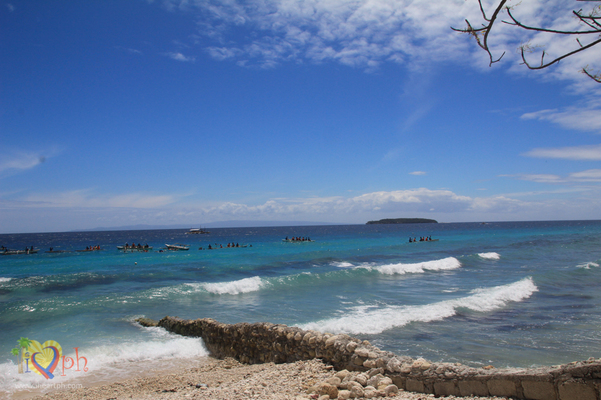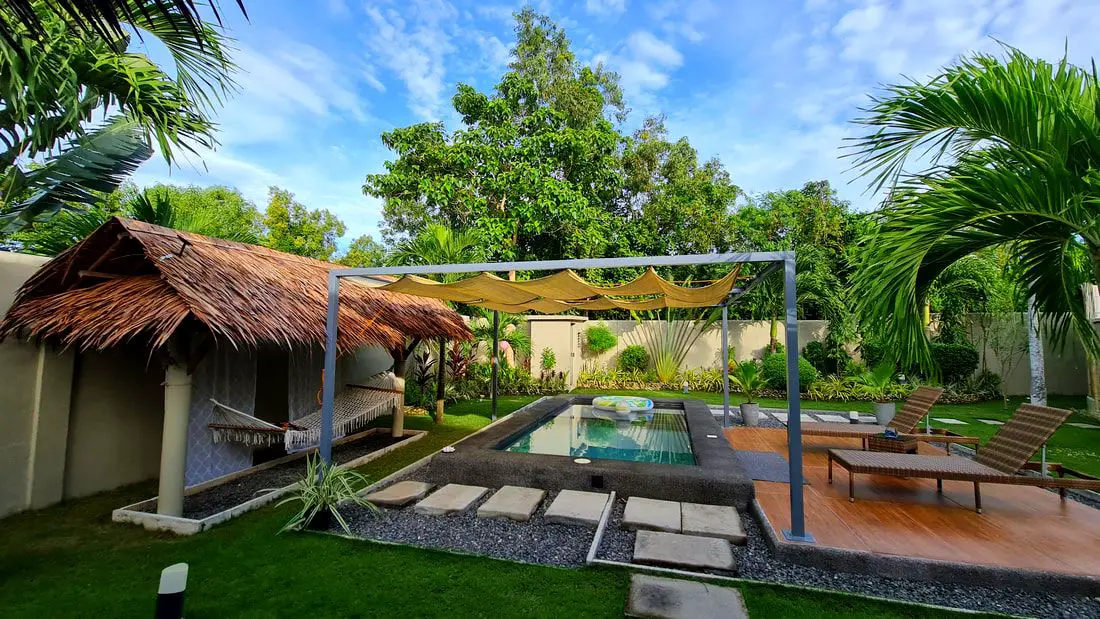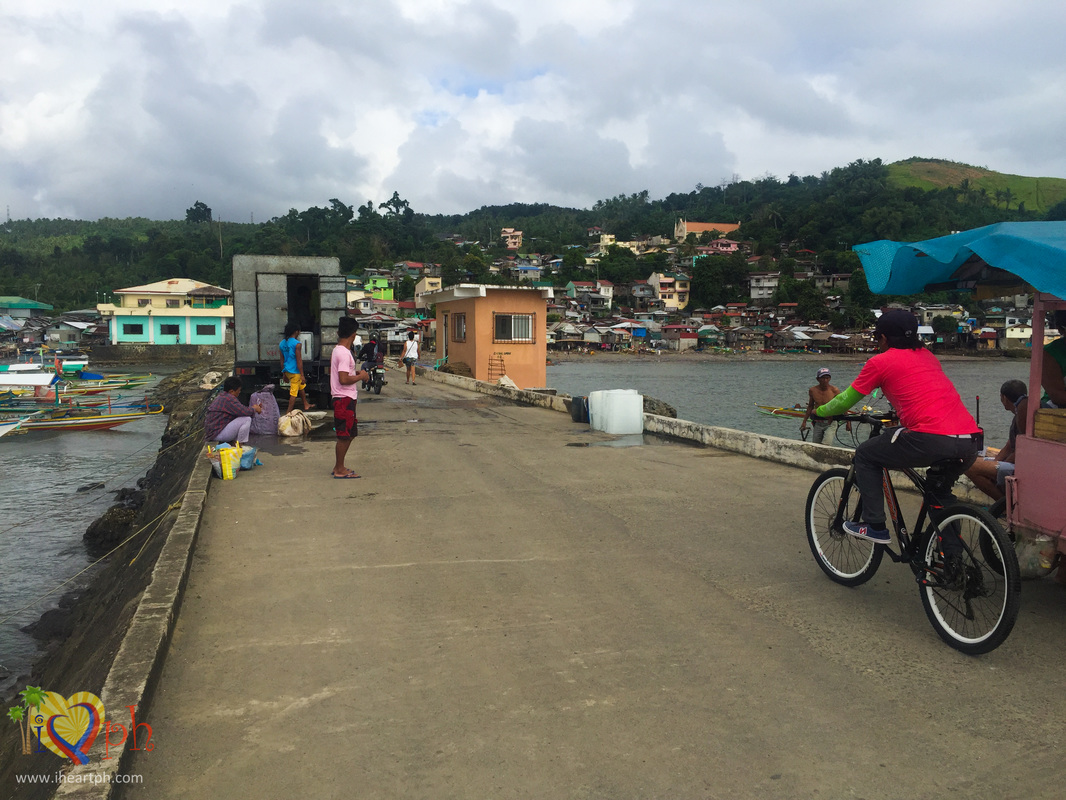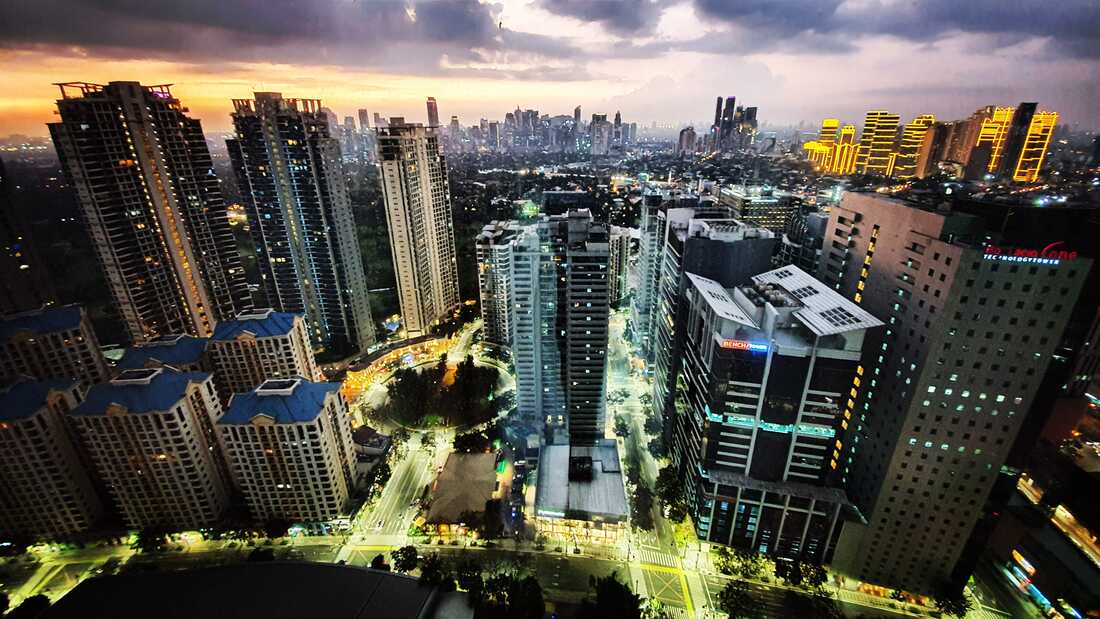Lazi Church, also known as the San Isidro Labrador Parish Church, is a Roman Catholic church located in the municipality of Lazi, Siquijor, Philippines. The church, along with the nearby convent, was built using coral stones and hardwood by Filipino artisans.
Currently located in the municipality of Lazi, both are considered the biggest and oldest in Siquijor.
It is a national cultural treasure and a national historical landmark, and it is also nominated for the UNESCO World Heritage List as part of the Baroque Churches of the Philippines.
If you are coming from Dumaguete City, you can book your day trip here: Siquijor Heritage Day Trip
History and Architecture
The Lazi Church was established in 1857 and is dedicated to Saint Isidore the Laborer. It was established as an independent parish in 1857, marking a significant chapter in the religious and cultural history of the region.
The construction of the church, completed in 1884, and its adjacent convent, completed in 1891, were pivotal in shaping the spiritual landscape of Lazi and its surrounding areas. The church is built in the neoclassical style and is made of sea stones and wood.
The neoclassical church doesn’t seem to have been destroyed by war or any natural calamities during its hundred years of existence. It still uses the original stone corals, which has reddish hue.
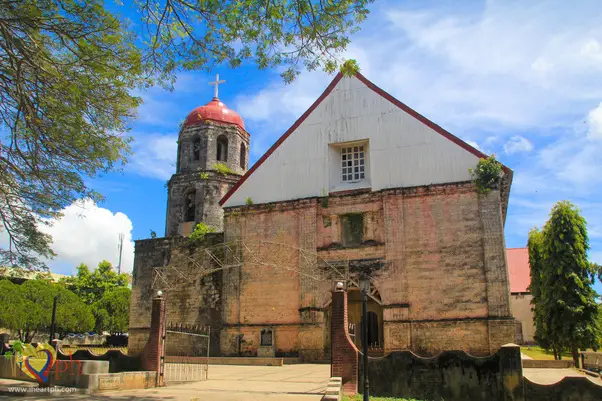
The church still uses the original retablo and has kept its old wood floorings. The walls haven’t been repainted and seemed to be from the olden days as well. It has two pulpits up in the front and 3 access doors, common to all neoclassical churches in the Philippines.
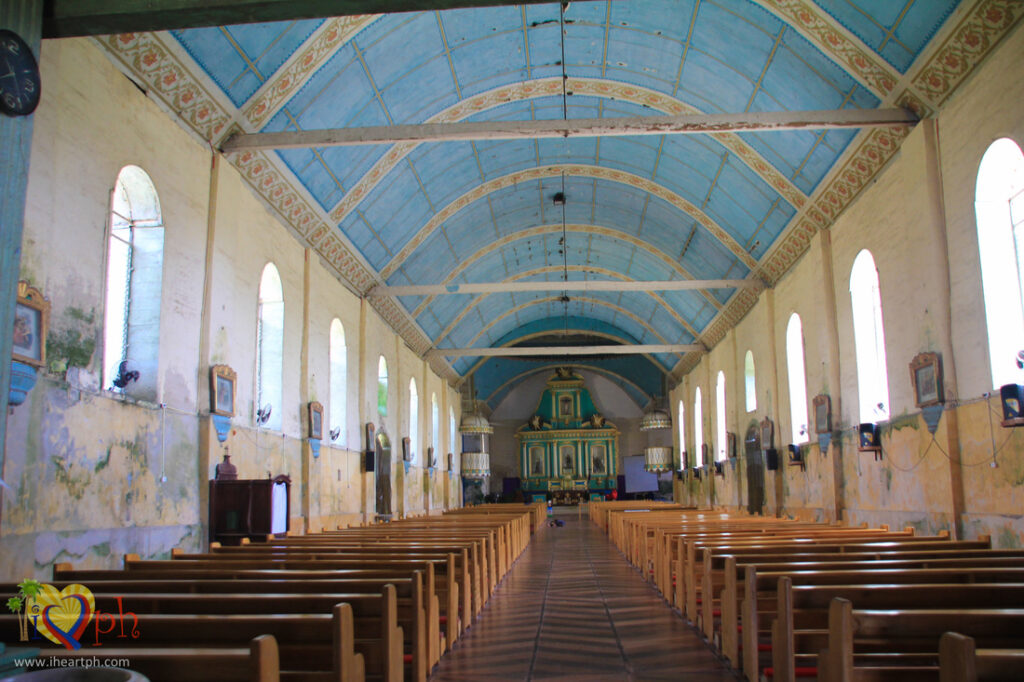
Below is the brief history of the Lazi Church and translated as: This parish was established by Augustinian Recollects under the patron saint San Isidro Labrador in 1957. The church and the convent was built under the management of P. Toribio Sanchez, OAR. Made of sea stones and hard wood, the church was completed by Filipino artisans in 1884 and the bell tower a year after. The spacious convent was started in 1887 and blessed in 1891. Measuring 42 x 38 meters, this convent is one of the largest in the Philippines.”
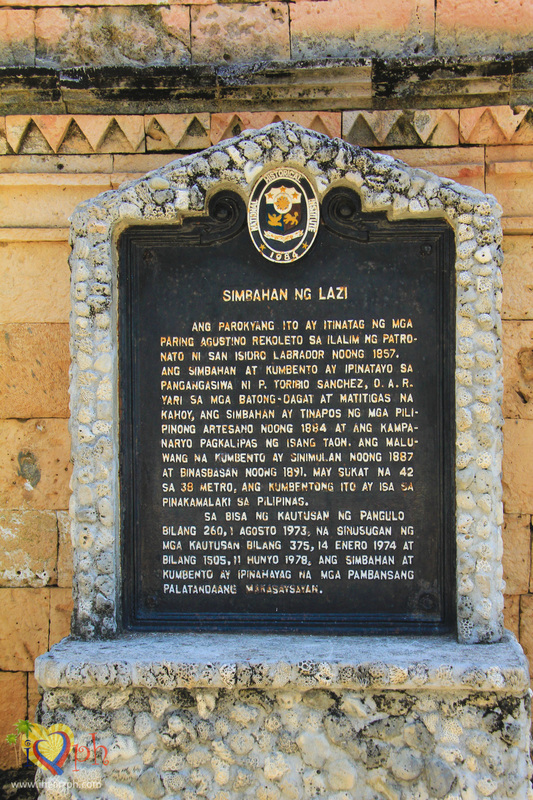
If you are coming from Dumaguete City, you can book your day trip here: Siquijor Heritage Day Trip
We also saw a banner by the roadside with the description of the church written down. It says “The church complex was built by the Augustinian Recollects in the latter half of the 19th century. The church has two pulpits, the original retablos, and wood floors with herring bone pattern. The church walls are approximately a meter thick. The walls are reinforced with log post which are embedded in the wall. The facade is veneered with coral stone, while the rest is made of fill. The pediments of the church are made of wood panels.“
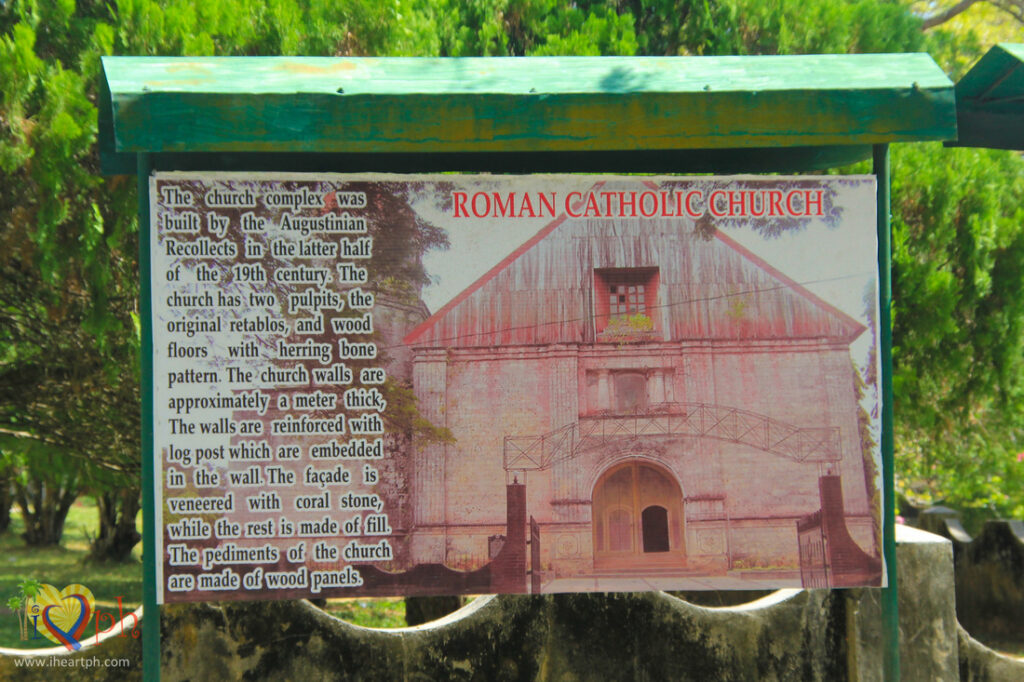
At the side of the church is an area where you can light votive candles with the effigy of the Sacred Heart of Jesus.

Lazi Convent
Adjacent to the church stands the U-shaped bahay na bato Lazi convent, one of the largest convents built during the Spanish colonial era in the Philippines. Its construction, funded by donations from Recollect parishes and missions, showcases the collaborative effort in establishing a robust religious infrastructure during that period.
The convent’s architecture, with stone walls on the first floor and wood panels on the second, reflects the typical design elements of the era, combining durability with aesthetic appeal.
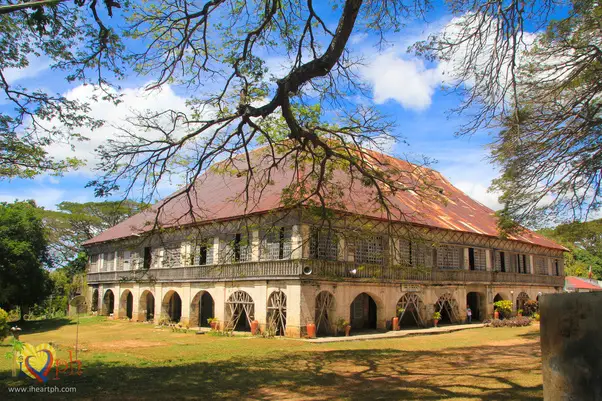
During our visit, the convent also has a banner by the road which describes its architecture and history. It says:
“Construction was started in 1887 under the supervision of Fray Toribio Sanchez, using indigenous coral stones and local hard wood. Completed and blessed in 1891, it is spacious and measures 42 x 38 meters, the biggest among the oldest in the Philippines and the whole Asia. The Building of the massive content may (now) be considered a marvelous feat in itself, since it was built at a time when engineering technology and equipment did not yet exist. It stands as a mute testimony of the determination of Fr. Sanchez and hard manual labor of our forebearers.”

Now repurposed as the Siquijor Heritage Museum, the convent houses an extensive collection of important church relics and paraphernalia. This adaptive reuse not only preserves the building’s structural integrity but also ensures that its historical and cultural significance continues to be celebrated and explored by both locals and visitors.
Tourists can visit the museum for P20 entrance fee. The museum houses old religious artifacts and 19th century antiques. However, taking photos are prohibited inside the museum premises.
Recognitions
National Historical Commission of the Philippines
The Lazi Church and its convent have been recognized as a National Cultural Treasure and a National Historical Landmark, underscoring their importance in the Philippines’ cultural and historical landscape.
Being declared as such by the National Historical Commission of the Philippines places Lazi Church and its convent in an esteemed category of protected sites. These honors are reserved for sites that hold exceptional historical, cultural, and architectural value to the country. They signify the recognition of the church and convent as pivotal elements in the narrative of the Philippines’ colonial past and its religious heritage
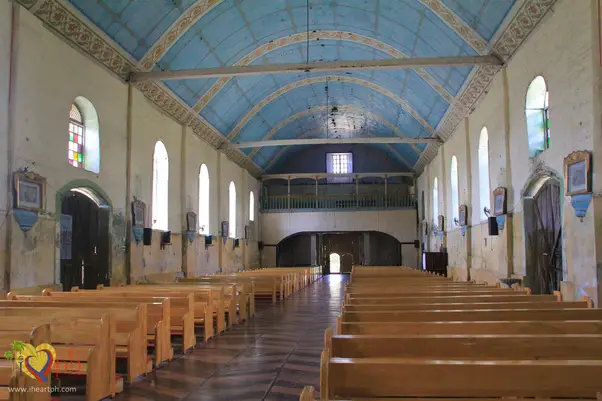
UNESCO
The nomination of Lazi Church for inclusion in the UNESCO World Heritage Tentative List further underscores its universal value and the ongoing efforts to preserve and promote the site.
Being part of this list means that the church is considered to have outstanding universal value, meeting at least one of the ten selection criteria set by UNESCO. This nomination is a preliminary step towards full World Heritage Site status, which would recognize the church not just as a national treasure but as a site of importance to the collective interests of humanity.
The inclusion in the UNESCO World Heritage Tentative List highlights the global significance of Lazi Church and its convent, placing them among other sites worldwide that are deemed worthy of preservation for their exceptional contributions to cultural heritage and human history. It also brings international attention to these sites, potentially increasing support for their conservation and attracting visitors interested in cultural and historical tourism.
If you are coming from Dumaguete City, you can book your day trip here: Siquijor Heritage Day Trip
Annual Feast and Cultural Significance
The annual feast of Lazi Church is held on May 15, in honor of Saint Isidore the Laborer. The feast is a significant event in the local community and attracts many visitors from around the Philippines. It is a time for celebration, prayer, and thanksgiving for the blessings received throughout the year.
Mass Schedule
The mass schedule for Lazi Church is as follows:
- Monday to Saturday: 6:00 AM and 5:00 PM
- Sunday: 6:00 AM, 8:00 AM, 9:30 AM, and 5:00 PM
How to Get to Lazi Church and Convent
Lazi Church is located in the heart of Lazi, south eastern side of Siquijor, and is easily accessible by car or public transportation. There are several multicabs and jeepneys traversing the national highway coming from San Juan. Ask the driver to drop you off near the San Isidro Labrador Church and Convent in Lazi.
If you are on a generous budget, I suggest to hire a tricycle or habal-habal tour guide. Their rate is around P1,000 for the entire Siquijor island which will take almost the entire day. This way, you can also visit other churches like the Santa Maria Church in the town of Maria and Saint Francis of Assisi Parish in Poblacion.
If you are coming from Dumaguete City, you can book your day trip here: Siquijor Heritage Day Trip
Nearby Accommodations
There are several nearby accommodations for visitors to Lazi Church. Some of the options include:
- Lazi Beach Club: This resort is located within the same town as the church and offers comfortable rooms and a beautiful beachfront location.
- Kawayan Holiday Resort: This resort is located a bit further away in the town of San Juan and offers comfortable rooms and a range of amenities, including a pool and restaurant.
- Coco Grove Beach Resort: This resort is also located in San Juan and considered one of the most premier resorts in the island. It offers a range of amenities, including a pool, restaurant, and spa, and a beachfront location.
Specific Guidelines for Visitors
Visitors to Lazi Church should be respectful of the church’s sacred space and follow any specific guidelines or rules that may be in place. Visitors should also be aware that the church is a popular tourist destination and may be busy during peak times.

